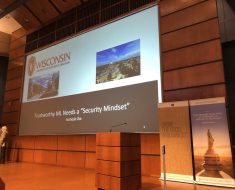@inproceedings{weng-etal-2023-large,
title = "Large Language Models are Better Reasoners with Self-Verification",
author = "Weng, Yixuan and
Zhu, Minjun and
Xia, Fei and
Li, Bin and
He, Shizhu and
Liu, Shengping and
Sun, Bin and
Liu, Kang and
Zhao, Jun",
editor = "Bouamor, Houda and
Pino, Juan and
Bali, Kalika",
booktitle = "Findings of the Association for Computational Linguistics: EMNLP 2023",
month = dec,
year = "2023",
address = "Singapore",
publisher = "Association for Computational Linguistics",
url = "https://aclanthology.org/2023.findings-emnlp.167",
doi = "10.18653/v1/2023.findings-emnlp.167",
pages = "2550--2575",
abstract = "Recently, with the chain of thought (CoT) prompting, large language models (LLMs), e.g., GPT-3, have shown strong reasoning ability in several natural language processing tasks such as arithmetic, commonsense, and logical reasoning. However, LLMs with CoT require multi-step prompting and multi-token prediction, which is highly sensitive to individual mistakes and vulnerable to error accumulation. The above issues make the LLMs need the ability to verify the answers. In fact, after inferring conclusions in some thinking decision tasks, people often check them by re-verifying steps to avoid some mistakes. In this paper, we propose and prove that LLMs also have similar self-verification abilities. We take the conclusion obtained by CoT as one of the conditions for solving the original problem. By performing a backward verification of the answers that LLM deduced for itself, we can obtain interpretable answer validation scores to select the candidate answer with the highest score. Experimental results demonstrate that the proposed method can improve the reasoning performance on various arithmetic, commonsense, and logical reasoning datasets. Our code is publicly available at: https://github.com/WENGSYX/Self-Verification.",
}
<?xml version="1.0" encoding="UTF-8"?>
<modsCollection xmlns="http://www.loc.gov/mods/v3">
<mods ID="weng-etal-2023-large">
<titleInfo>
<title>Large Language Models are Better Reasoners with Self-Verification</title>
</titleInfo>
<name type="personal">
<namePart type="given">Yixuan</namePart>
<namePart type="family">Weng</namePart>
<role>
<roleTerm authority="marcrelator" type="text">author</roleTerm>
</role>
</name>
<name type="personal">
<namePart type="given">Minjun</namePart>
<namePart type="family">Zhu</namePart>
<role>
<roleTerm authority="marcrelator" type="text">author</roleTerm>
</role>
</name>
<name type="personal">
<namePart type="given">Fei</namePart>
<namePart type="family">Xia</namePart>
<role>
<roleTerm authority="marcrelator" type="text">author</roleTerm>
</role>
</name>
<name type="personal">
<namePart type="given">Bin</namePart>
<namePart type="family">Li</namePart>
<role>
<roleTerm authority="marcrelator" type="text">author</roleTerm>
</role>
</name>
<name type="personal">
<namePart type="given">Shizhu</namePart>
<namePart type="family">He</namePart>
<role>
<roleTerm authority="marcrelator" type="text">author</roleTerm>
</role>
</name>
<name type="personal">
<namePart type="given">Shengping</namePart>
<namePart type="family">Liu</namePart>
<role>
<roleTerm authority="marcrelator" type="text">author</roleTerm>
</role>
</name>
<name type="personal">
<namePart type="given">Bin</namePart>
<namePart type="family">Sun</namePart>
<role>
<roleTerm authority="marcrelator" type="text">author</roleTerm>
</role>
</name>
<name type="personal">
<namePart type="given">Kang</namePart>
<namePart type="family">Liu</namePart>
<role>
<roleTerm authority="marcrelator" type="text">author</roleTerm>
</role>
</name>
<name type="personal">
<namePart type="given">Jun</namePart>
<namePart type="family">Zhao</namePart>
<role>
<roleTerm authority="marcrelator" type="text">author</roleTerm>
</role>
</name>
<originInfo>
<dateIssued>2023-12</dateIssued>
</originInfo>
<typeOfResource>text</typeOfResource>
<relatedItem type="host">
<titleInfo>
<title>Findings of the Association for Computational Linguistics: EMNLP 2023</title>
</titleInfo>
<name type="personal">
<namePart type="given">Houda</namePart>
<namePart type="family">Bouamor</namePart>
<role>
<roleTerm authority="marcrelator" type="text">editor</roleTerm>
</role>
</name>
<name type="personal">
<namePart type="given">Juan</namePart>
<namePart type="family">Pino</namePart>
<role>
<roleTerm authority="marcrelator" type="text">editor</roleTerm>
</role>
</name>
<name type="personal">
<namePart type="given">Kalika</namePart>
<namePart type="family">Bali</namePart>
<role>
<roleTerm authority="marcrelator" type="text">editor</roleTerm>
</role>
</name>
<originInfo>
<publisher>Association for Computational Linguistics</publisher>
<place>
<placeTerm type="text">Singapore</placeTerm>
</place>
</originInfo>
<genre authority="marcgt">conference publication</genre>
</relatedItem>
<abstract>Recently, with the chain of thought (CoT) prompting, large language models (LLMs), e.g., GPT-3, have shown strong reasoning ability in several natural language processing tasks such as arithmetic, commonsense, and logical reasoning. However, LLMs with CoT require multi-step prompting and multi-token prediction, which is highly sensitive to individual mistakes and vulnerable to error accumulation. The above issues make the LLMs need the ability to verify the answers. In fact, after inferring conclusions in some thinking decision tasks, people often check them by re-verifying steps to avoid some mistakes. In this paper, we propose and prove that LLMs also have similar self-verification abilities. We take the conclusion obtained by CoT as one of the conditions for solving the original problem. By performing a backward verification of the answers that LLM deduced for itself, we can obtain interpretable answer validation scores to select the candidate answer with the highest score. Experimental results demonstrate that the proposed method can improve the reasoning performance on various arithmetic, commonsense, and logical reasoning datasets. Our code is publicly available at: https://github.com/WENGSYX/Self-Verification.</abstract>
<identifier type="citekey">weng-etal-2023-large</identifier>
<identifier type="doi">10.18653/v1/2023.findings-emnlp.167</identifier>
<location>
<url>https://aclanthology.org/2023.findings-emnlp.167</url>
</location>
<part>
<date>2023-12</date>
<extent unit="page">
<start>2550</start>
<end>2575</end>
</extent>
</part>
</mods>
</modsCollection>
%0 Conference Proceedings %T Large Language Models are Better Reasoners with Self-Verification %A Weng, Yixuan %A Zhu, Minjun %A Xia, Fei %A Li, Bin %A He, Shizhu %A Liu, Shengping %A Sun, Bin %A Liu, Kang %A Zhao, Jun %Y Bouamor, Houda %Y Pino, Juan %Y Bali, Kalika %S Findings of the Association for Computational Linguistics: EMNLP 2023 %D 2023 %8 December %I Association for Computational Linguistics %C Singapore %F weng-etal-2023-large %X Recently, with the chain of thought (CoT) prompting, large language models (LLMs), e.g., GPT-3, have shown strong reasoning ability in several natural language processing tasks such as arithmetic, commonsense, and logical reasoning. However, LLMs with CoT require multi-step prompting and multi-token prediction, which is highly sensitive to individual mistakes and vulnerable to error accumulation. The above issues make the LLMs need the ability to verify the answers. In fact, after inferring conclusions in some thinking decision tasks, people often check them by re-verifying steps to avoid some mistakes. In this paper, we propose and prove that LLMs also have similar self-verification abilities. We take the conclusion obtained by CoT as one of the conditions for solving the original problem. By performing a backward verification of the answers that LLM deduced for itself, we can obtain interpretable answer validation scores to select the candidate answer with the highest score. Experimental results demonstrate that the proposed method can improve the reasoning performance on various arithmetic, commonsense, and logical reasoning datasets. Our code is publicly available at: https://github.com/WENGSYX/Self-Verification. %R 10.18653/v1/2023.findings-emnlp.167 %U https://aclanthology.org/2023.findings-emnlp.167 %U https://doi.org/10.18653/v1/2023.findings-emnlp.167 %P 2550-2575
Markdown (Informal)
[Large Language Models are Better Reasoners with Self-Verification](https://aclanthology.org/2023.findings-emnlp.167) (Weng et al., Findings 2023)
ACL
- Yixuan Weng, Minjun Zhu, Fei Xia, Bin Li, Shizhu He, Shengping Liu, Bin Sun, Kang Liu, and Jun Zhao. 2023. Large Language Models are Better Reasoners with Self-Verification. In Findings of the Association for Computational Linguistics: EMNLP 2023, pages 2550–2575, Singapore. Association for Computational Linguistics.





